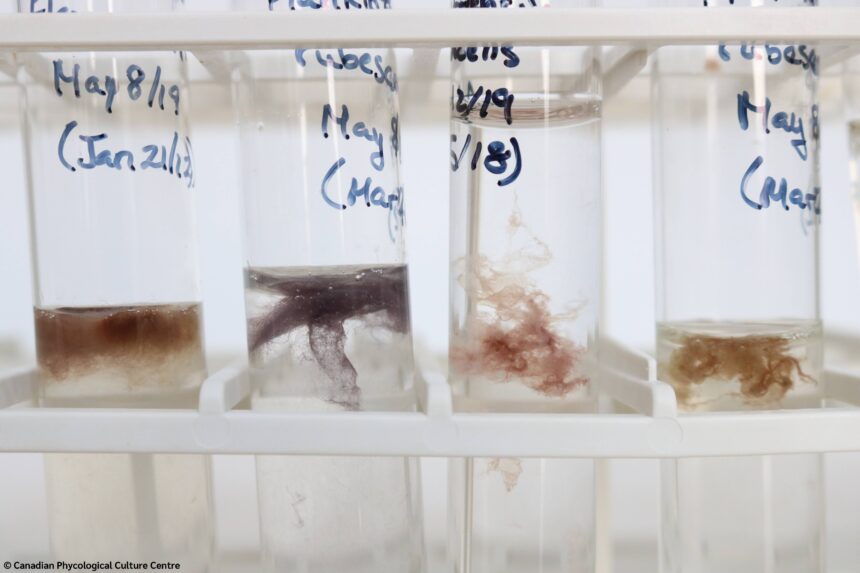In a nondescript building tucked away on the University of Waterloo campus lies what might be Canada’s most significant weapon against environmental degradation and climate change: thousands of living algae specimens quietly bubbling in specialized containers. This facility, known as the Canadian Phycological Culture Centre (CPCC), represents North America’s largest freshwater algal collection and serves as a crucial scientific resource that few Canadians know exists.
“These tiny organisms are ecological powerhouses,” explains Dr. Kirsten Müller, who oversees the collection as the CPCC’s director. “What looks like green scum to most people represents the foundation of entire aquatic ecosystems and offers tremendous potential for everything from carbon capture to biofuel production.”
The collection, established in 1987, has grown to house over 4,000 distinct algal strains across 300 genera. What began as a modest research tool has evolved into an international reference collection that ships samples worldwide to universities, government agencies, and private industry partners seeking solutions to pressing environmental challenges.
Researchers at the CPCC meticulously maintain these living specimens in climate-controlled conditions, regularly transferring them to fresh growth media to ensure their viability. This preservation work extends beyond mere collection—it represents a living library of biodiversity that supports countless research initiatives.
The applications of this algal collection extend far beyond academic curiosity. Scientists at CO24 News have learned that these microscopic organisms are being deployed to detect environmental toxins, develop sustainable biofuels, and even create new food sources. The economic implications for Canadian business sectors ranging from agriculture to energy production are substantial.
“We’ve seen tremendous interest from both government agencies and private companies looking to develop algae-based solutions,” notes Dr. Rebecca Case, who collaborates with the CPCC. “These organisms can help us understand everything from climate change impacts on Canadian water bodies to potential treatments for wastewater.”
The facility’s work has taken on increased urgency as freshwater ecosystems face unprecedented threats. Harmful algal blooms—explosive overgrowths of certain algal species—have become more frequent in the Great Lakes region, causing ecological damage and threatening drinking water supplies. By studying diverse algal species, researchers aim to better predict, prevent, and mitigate these destructive events.
International collaboration has become central to the CPCC’s mission. The centre regularly exchanges specimens and knowledge with similar collections in Europe and Asia, placing Canada at the forefront of global phycological research—the study of algae. This scientific diplomacy represents an often-overlooked aspect of Canadian politics and international relations in the scientific community.
Funding challenges remain a persistent concern for the facility. Despite its global significance, the CPCC operates on a relatively modest budget, requiring its staff to continuously seek grants and partnerships to maintain the collection. This financial precarity raises questions about Canada’s commitment to fundamental research infrastructure supporting environmental science.
The work continues largely out of public view, with researchers painstakingly documenting genetic information, growth characteristics, and potential applications for each strain. This database of living organisms represents a unique biological heritage that could prove invaluable as we face an uncertain environmental future.
As world climate patterns shift and freshwater resources come under increasing pressure, how will we leverage biological resources like the CPCC’s algae collection to develop innovative solutions to our most pressing environmental challenges?










